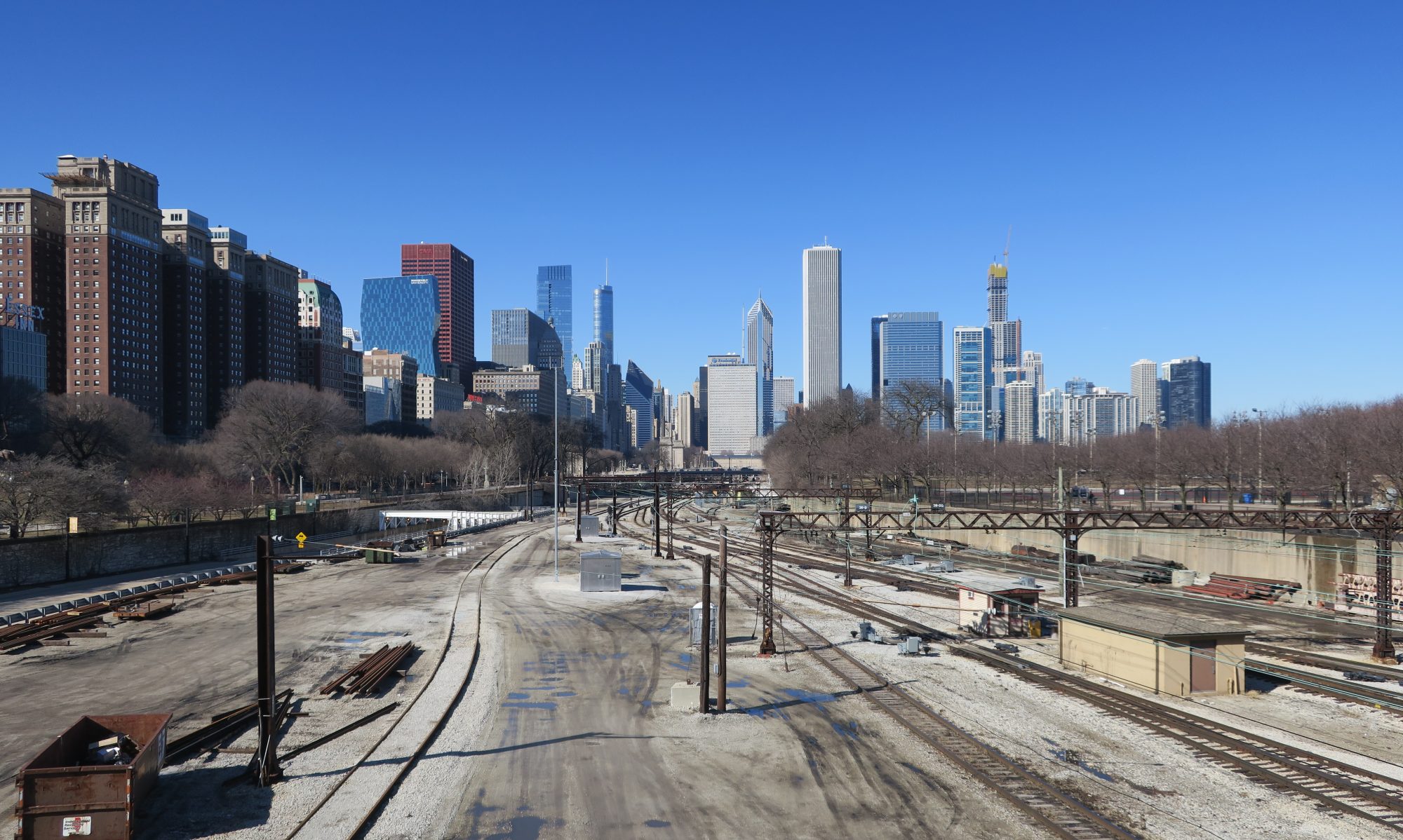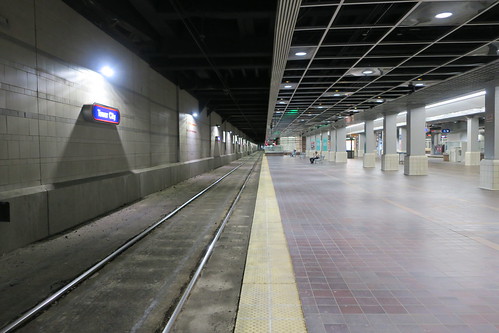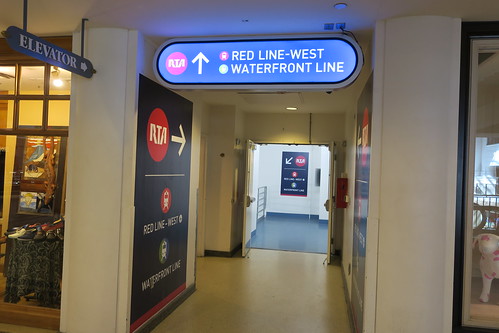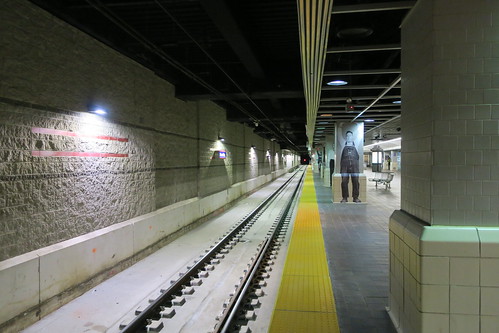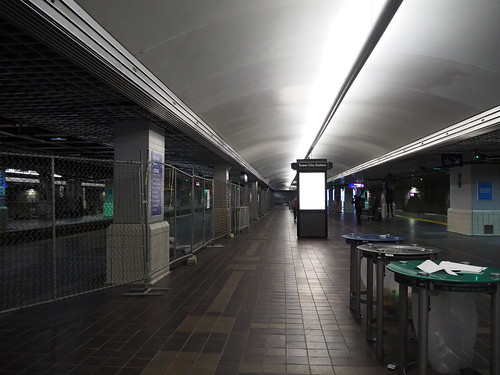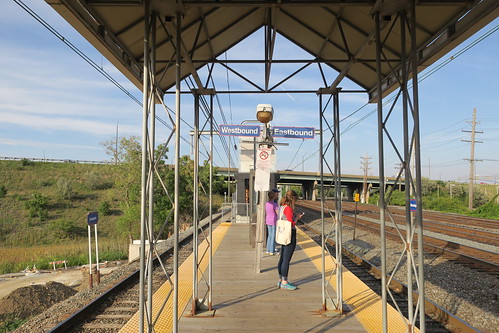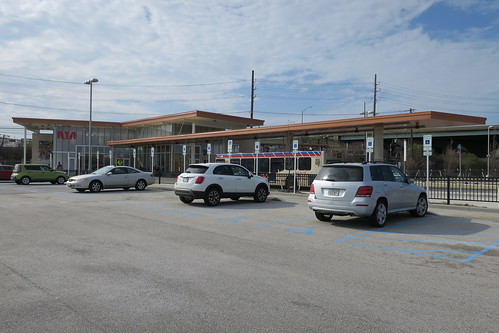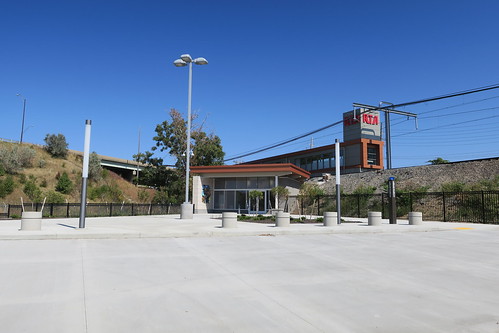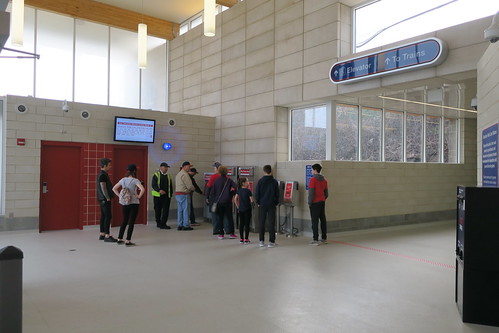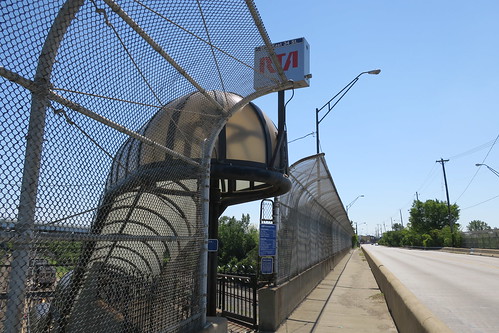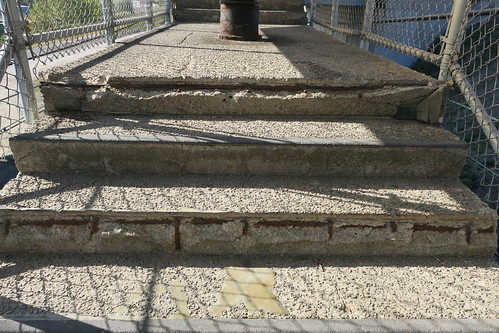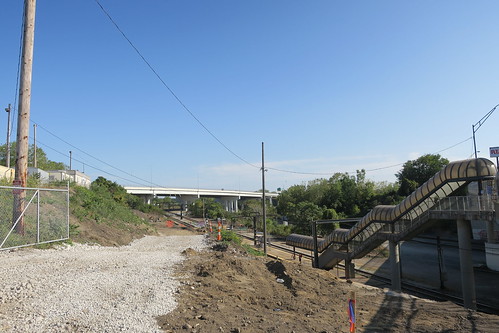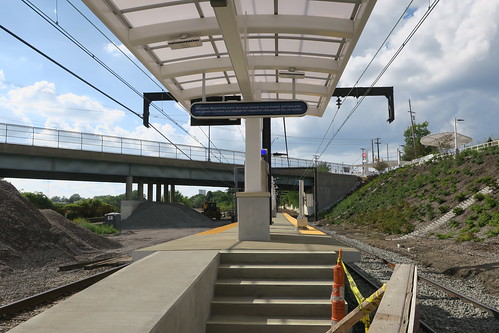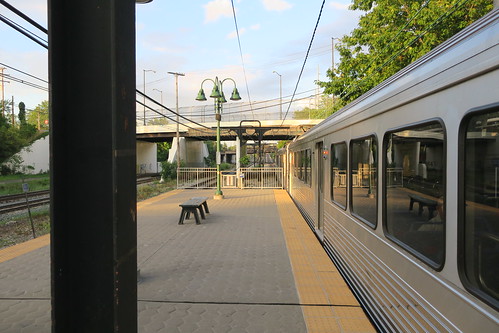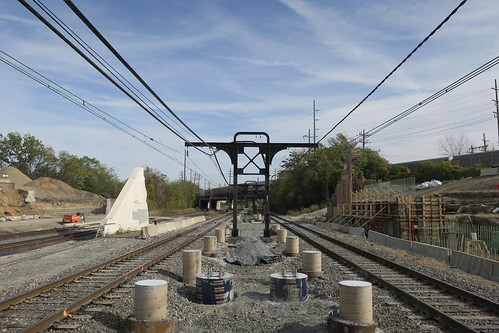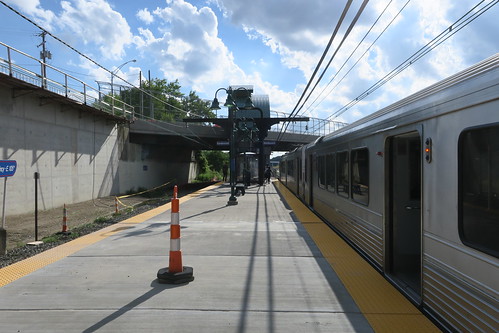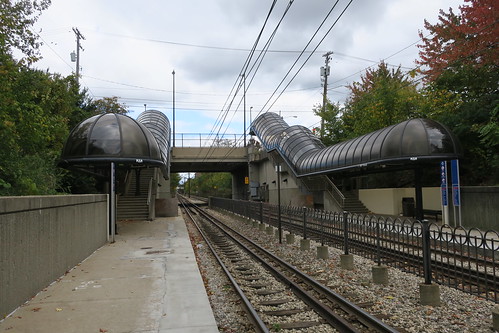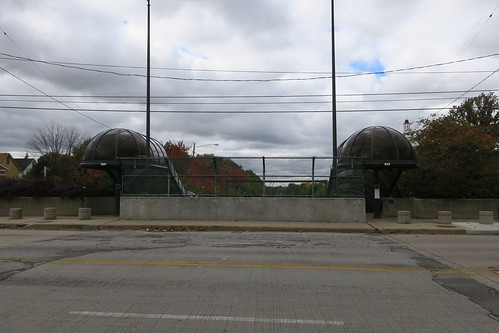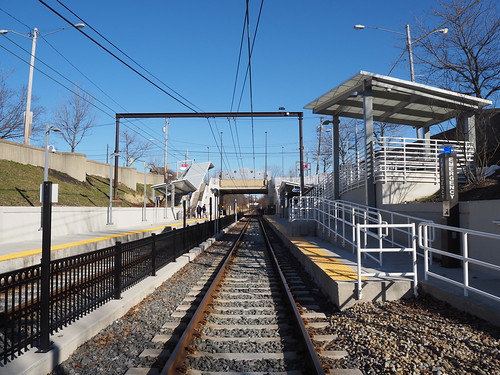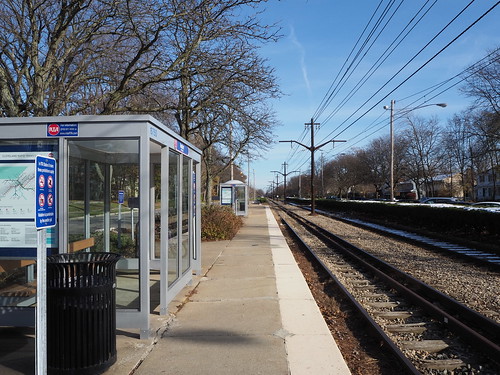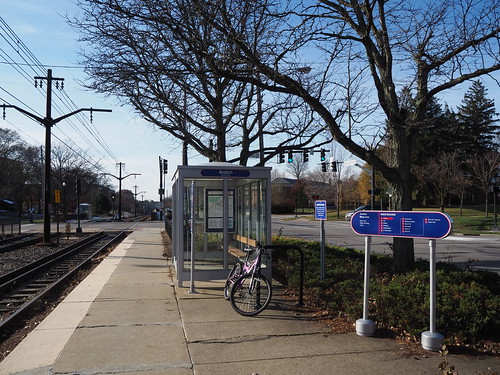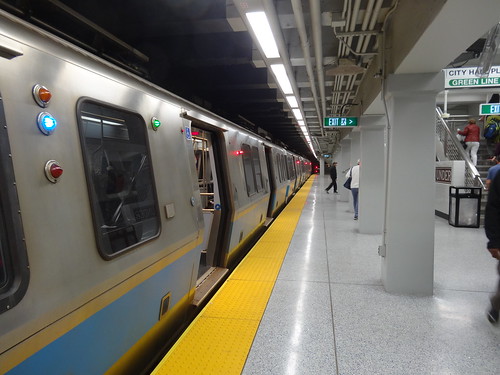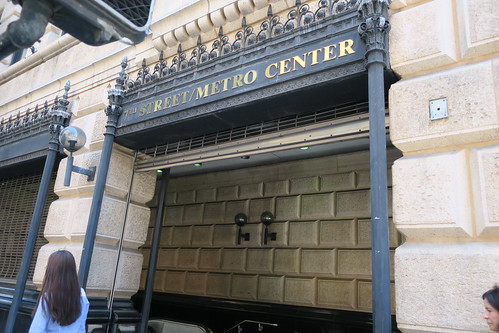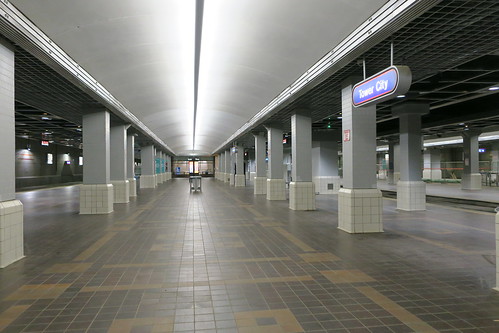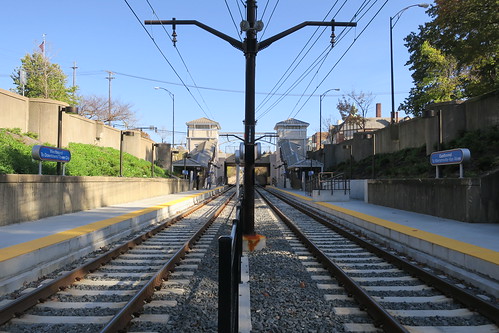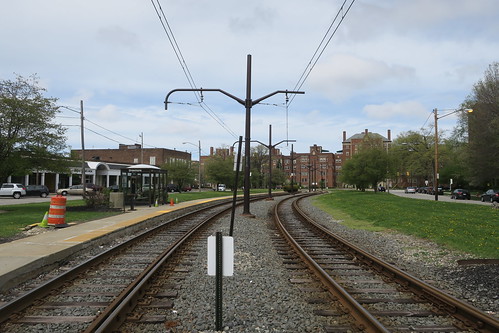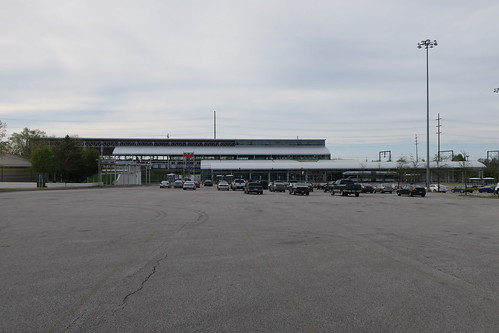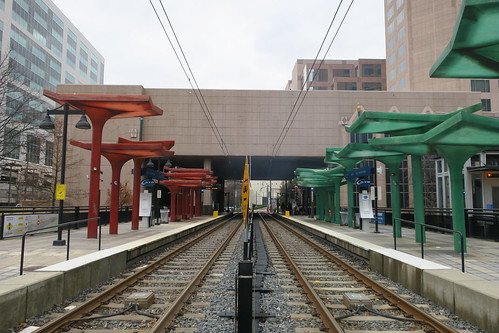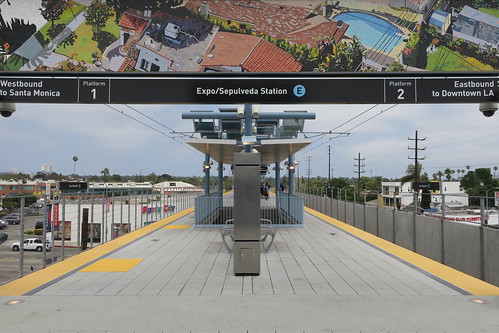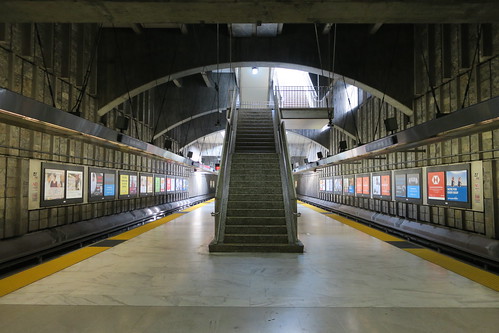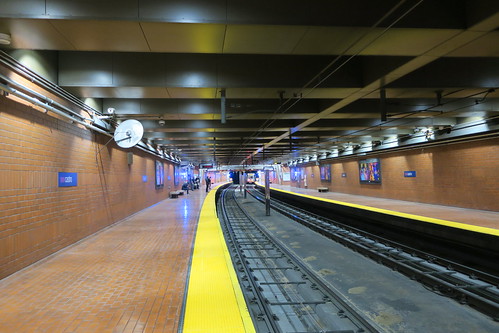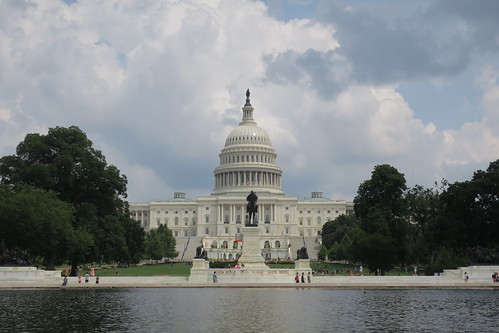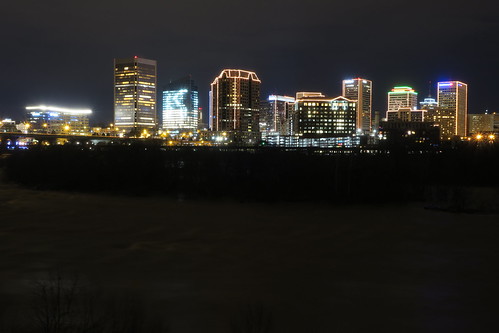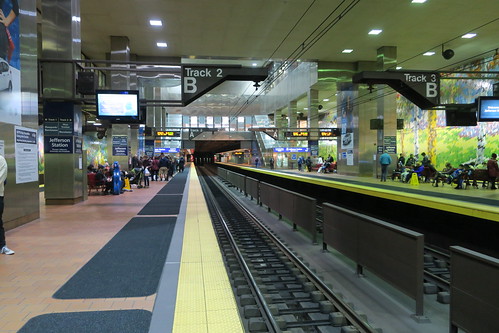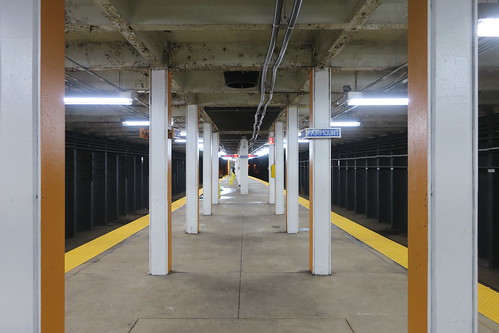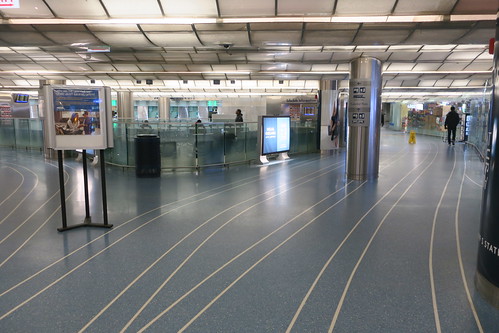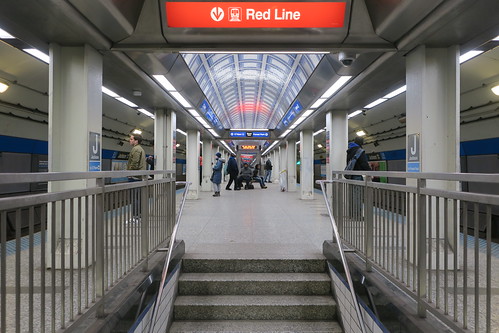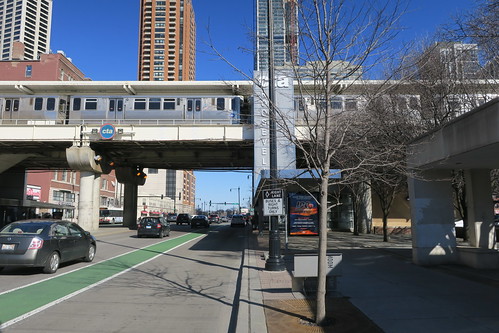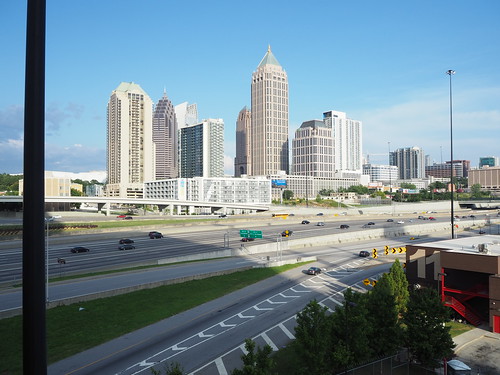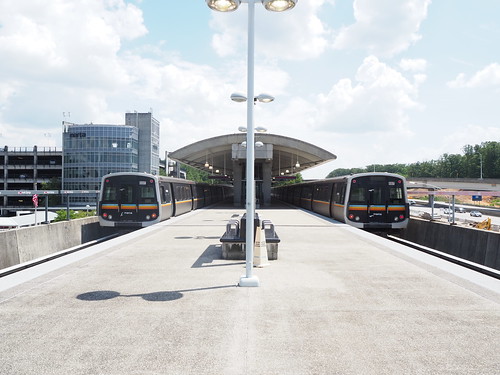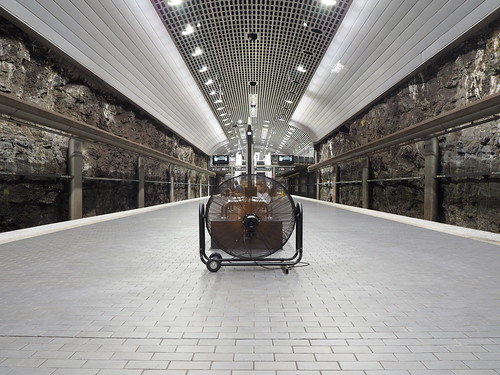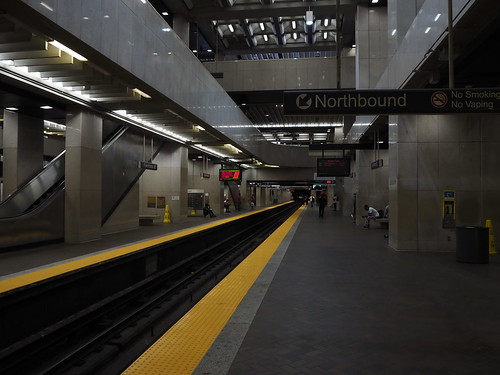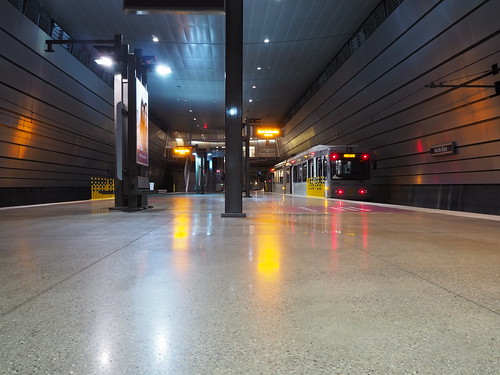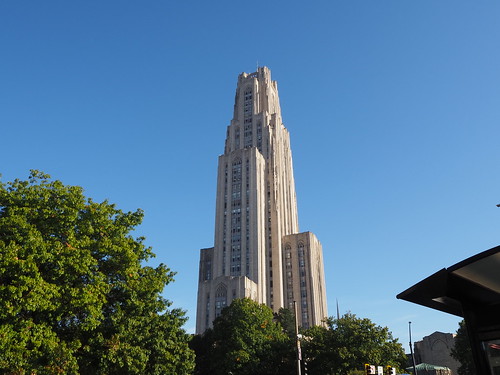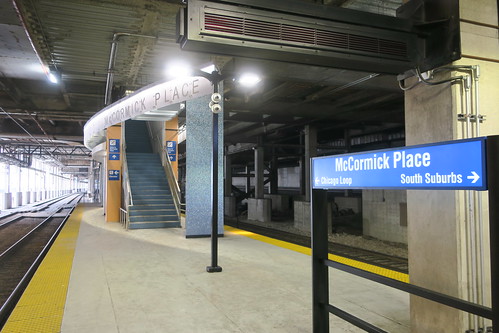My interest in photography as a way to document the world matured during my time in Cleveland, and as my time there comes to a close, I have begun to think about the change that occurred in my relatively short time here.
Railcar Renovations
My first experience with transit in Cleveland was in February 2015 as part of a campus visit to Case Western Reserve University. Some photos from that trip are available in my previous post explaining the evolution of my photography. One photo I didn’t include in there was the interior of the train:

That trip was the only time I ever rode where the interior looked like that, since the RTA undertook a refurbishment project on the entire Red Line fleet. Now, the interiors look like this:

I first experienced the new fleet when I did a prospective student visit after being admitted. I took the train back to the airport and experienced the renovated interior for the first time. It looks a lot nicer, with better-looking seats, brighter lights, an easier-to-clean floor, better color scheme, etc.
Little Italy Station
In early 2015 when I first visited Cleveland, the two stops near CWRU were Cedar-University and Euclid-East 120th. The latter would cease to exist before I returned, being replaced by the new Little Italy-University Circle station a block away later that year. Not long later, the original Euclid-East 120th Street station would be demolished.
Tower City Track Replacement
Starting around the time I came to CWRU, the RTA began replacing Track 8 (the main westbound track) at Tower City. The original track looked something like this:
For the time it took to replace the track during the first part of my freshman year, westbound trains were diverted to a non-revenue track separate from the main station. This temporary station had its own fare control and everything:
Eventually, late in 2016, the project was completed and the new westbound track completed, and service was restored to the main station for both directions. The new track used ballastless track, a major improvement over the original. Take a look:
Now, in early 2020, they’re performing similar work on the stub tracks on either side. Since both through tracks are still in service, service isn’t affected and trains simply don’t terminate directly at Tower City for the time being.
Warrensville-Shaker
During the second half of 2016, the Warrensville-Shaker station on the Green Line was replaced. I don’t have any pictures of the original station, but I do have some pictures of the new one:
Lee-Shaker
In 2017, the RTA replaced the Lee-Shaker station. It was a basic median streetcar station on Shaker Boulevard, but was at a particularly high-traffic location and thus could use both a modernization and ADA accessibility. I actually was (according to Google Images) the first person to post pictures of the new station online.
Brookpark
The Brookpark Station saw a complete replacement during my Freshman year. The station that existed in 2016 was a “temporary” station that had been in use for about ten years.
I first came to Cleveland during the reconstruction process, so I saw the platform shortened so it only fit one car plus one door on the other car (before this construction project started, the platform could fit a full train). However, the platform was one of only three wooden platforms on the system (the others being East 79th and East 34th, and only East 79th is still wooden now). The headhouse also was on the opposite side of the westbound track from the island platform with no tunnel or bridge, requiring passengers to cross the track to access the platform.
Throughout my freshman year, construction activity was going on. I was impatiently waiting for it to be done, constantly looking for press releases. I distinctly remember taking the train out to the airport very early in the morning with an operator who seemed like he had just started his shift and was very enthusiastic, and he said “Next stop: Brookpark! The new station is coming very soon, folks…” The time I was waiting for finally came around in April, when trains began stopping at the new platform. The new station was a much more modern station:
In all, the new station looked much more modern and was more functional than the one it replaced. I was quite pleased with the new results. Interestingly, this removed the only grade crossing on the Red Line for a time, but another one would open later at East 34th Street (read on…)
East 34th Street
The East 34th Street station as I first remember it was a fairly outdated and run-down station. It was a simple island platform (with a low section for the Blue/Green lines and a high section for the Red Line) accessible by a single set of stairs from East 34th Street.
My sophomore year, the renovation project began. I did my best to come down to the station when I had the chance so that I could document the change.
Then, as I went back to North Carolina for the summer, work continued. I came back in the fall to see the work mostly completed:
The new station also looked much more modern and fresh, giving a nice upgrade to the Campus District. It was also renamed “Tri-C – Campus District” to reflect its proximity to Tri-C.
East 105th-Quincy
For a long time, East 105th-Quincy was known for only opening the front door of the front car of each train due to the platform being too short. Needless to say, this was a cause of a lot of confusion for riders not familiar with the situation and delays for everyone else. Riders in the second car had to go between cars if they wanted to get off, and the single door slowed everyone down.
Beginning in late 2017, work began to lengthen the platform. Not only did they lengthen the platform, but they also opened a second entrance, maknig this one of only two stations in the entire system with two entrances, the other being West 65th-Lorain.
As of September 2018, the platform had been lengthened to the point where a two car train could open all of its doors.
However, that was only one part of the project. Next, the new entrance was to open in 2019.
East 116th Street
East 116th Street also saw a major renovation, going from being a fairly old station similar to what East 34th originally was (especially the staircases) to another modern station.
Then, the renovations began! The temporary station in place during the renovations consisted of two wooden platforms and a fairly basic entrance located further down the block to allow work on the new station to proceed unobstructed:
Then, the new station was built mostly over the summer, so I wasn’t able to document it. So, let’s jump to the big finish:
The new station, like the others, was a major improvement. It fit in nicely with the surrounding neighborhood, was ADA accessible, and was generally just much nicer-looking.
Blue Line renovations
I was notified on Wikipedia that the RTA was performing some upgrades for various stations on the Blue Line, so when I got the time and clear skies, I went out there to document the upgrades. The upgrades appeared to be new signage and shelters, with the platform structure itself remaining unchanged. The first station where I saw such upgrades was Avalon:
Final thoughts
A lot changed in four years, and I was glad to be here to document it. These renovations gave me exciting material for photography and always gave me an excuse to get out of University Circle for a while. They are in keeping with Cleveland’s city motto of “Progress and Prosperity” (even though one of the stations was in Shaker Heights) and helped modernize the city. It looks like I’ve seen the last major project that will be completed before I leave here in May, but I know there’s plenty of work going on in Chicago that I will be able to photograph as well.
